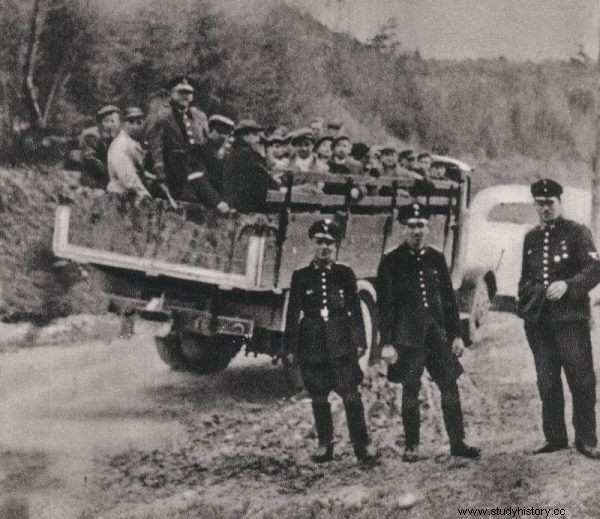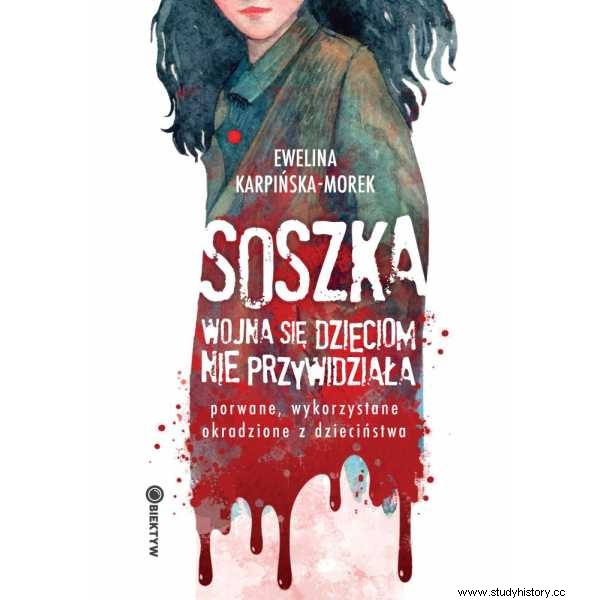Families being separated, refusal of a dignified burial of the dead, forced abortions ... Poles who went to work in Germany during World War II had no rights.
When I came to the bars, three Poles and a soldier - a slave - French already worked for them. One of the Poles, Józek, came from Turek. The other compatriots on the farm are Stasia Nowakowska and Stach Rak. They came to Germany exactly from Poręba Wierzbicka - as soon as the Germans entered Poland. They volunteered because they already had an illegitimate child in Poland, and Stach's parents did not want a poor daughter-in-law.
They never admitted that they had volunteered because they were very ashamed of it. When someone asked, they said they were from a round-up. I found out that they had volunteered much later.
- What happened to this illegitimate child?
- Stasia left the child with her parents in Poland. They had the second birth at baora.
- Did they live with them?
- Yes. They lived together on a farm (…).
The tomb at the wall
Later Stasia became pregnant again.
- And baor wanted to support her normally with two children.
- Really? It's rare…
- Yes. He even asked the authorities in Dortmund to give him an employee who could replace Stasia in the field work. He was refused. Not only that - he was told that he would get someone, but Stasia and the children must be sent back to Poland. He was even given a date by which Stas was to leave the farm.
- And she left?
- Yes.
- And what happened with Stach?
- After Stasi left Stach, you know, he experienced it all very much. In a week's time, as always, we had a bombing raid. It was at Pentecost .. We lived some 400 meters in a straight line from the factory, hence the regular bombings. A lot of incendiary bombs fell into the backyard of our bar, but they didn't explode. Stachu, since Stasi left for Poland, was looking for an opportunity to do something for himself ...

Polish farmers from the Krakow voivodeship transported to forced labor to the Third Reich.
- To commit suicide?
- Yes. Together with one of the Russians, we had to keep an eye on him. It was then that Ruski overslept, and I was very busy. Stach, unattended by anyone, left the yard after the raid and threw a stone at the bomb. The debris tore his arms and legs apart.
- He died?
- No. The young baorek quickly went to the hospital with him, but both legs were amputated after a week. He only had his thumb left on his right hand. I visited him the day after the operation with Baorek, Luiza. The nurse was changing the dressing and he was exposed. I saw him without legs, with a torn crotch and I passed out. I was then detained in the hospital for three days.
Stachu was only alive for three more months. He died.
After talking to the director of the hospital, it turned out that if no one came for the body, Stachu would be burned in the hospital furnace.
The case was taken care of by colleagues who worked at the Krupp factory. They committed themselves to bury him.
- Where were the forced laborers hiding then?
- Well, it was not so easy to bury a Pole in Germany during the war ... There was a cemetery in Lutendortmund, but you were not allowed to bury foreigners . In Dortmund it was allowed, but only against the wall - in one designated place. So they put that Stach without arms and legs in a cardboard box and set off.
- Later they told me that when they got there, their clothes were wet with fear. We weren't allowed to travel by means of transport, and here was a corpse in a box under the arm. How they would catch them - you know how it would end. They buried him anyway.
Macabre "maternity clinic"
Perhaps their fate would have turned out differently if Stach had known that in Waltrop, located only 16 kilometers from Bövinghausen, there was a Nazi-supervised maternity hospital - the so-called central abortion camp for the Westphalia Waltrop-Holthausen. Then he would have known that the Stasi's departure saved them from losing their child.
Pregnant forced laborers from the East, including Poland, were sent to the central abortion camp. Thanks to the short "leave" of only a dozen or so days, they were able to return to work very quickly.
The macabre "maternity clinic" was established in April 1943. Women were forced to have abortions, and children who had managed to come into the world were weaned from their mothers and driven to extreme exhaustion and death. Thanks to aerial photos from 1945, it is known that it consisted of at least nine dark-painted barracks and several smaller buildings. The complex was fenced with barbed wire.
Waltrop-Holthausen was the largest institution of this type in the Third Reich. It functioned from 1943 to 1945. At that time, 1,273 children were born in the "clinic". The graves of nearly 500 babies were later found near Waltrop. Over 700 women were aborted.

The text is an excerpt from Ewelina Karpińska-Morek's book “Soszka. Children did not dream of war ”, which has just been published by Wydawnictwo M.
Today, near the former camp, there is a symbolic monument. There are faces carved into several square timber stuck in the ground. The larger ones are women, the smaller ones are children. Two are lying on the ground. They are the youngest victims of the abortion clinic.
- Mrs. Zosia, did you know that there was such a place in Waltrop?
- During the war, no. My baorka told me about killing children after the war was over. She knew about it from her friend, who worked in this hospital as a midwife.
Hiding the pregnancy of forced laborers and then trying to find a replacement worker so that Staś could stay on the farm probably saved the woman from staying in Waltrop.
Source:
The text is an excerpt from Ewelina Karpińska-Morek's book “Soszka. Children did not dream of war ”, which has just been published by Wydawnictwo M.
